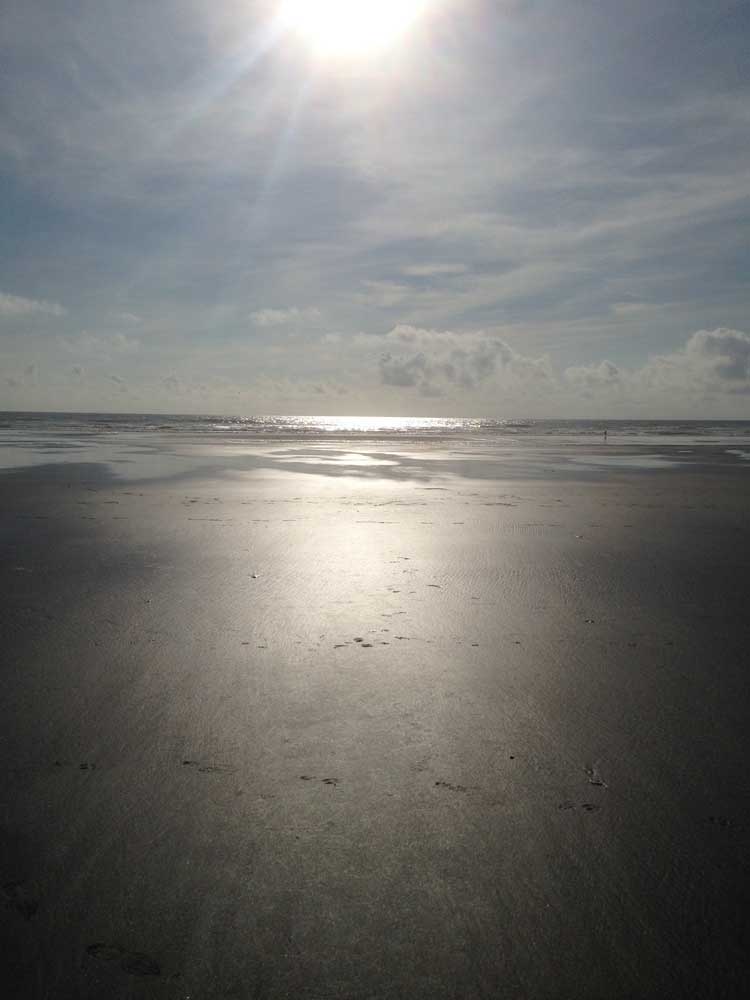Seen from Seaside: View of The New Yorker, from a New Yorker
Published 12:34 pm Monday, August 3, 2015

- Photo credit:R.J. Marx/Seaside Signal With skies and beaches like thisi in Gearhart, it's hard to imagine an apocalypse around the corner.
“The Earthquake That Will Devastate Seattle.” The New Yorker piece by Kathryn Schulz terrifyingly chronicles the all but inevitable fate of those of us living in the Cascadia subduction zone: “When the giant fault line along the Pacific Northwest ruptures, it could be our worst disaster ever.”
“Worst … ” “Disaster … ” “Ever.”
Even Steven Spielberg wouldn’t use that tagline without thinking twice.
“Is that you?” a friend Facebook-messaged from the East Coast.
Ummm, yeah. Seaside. Cannon Beach. Gearhart. The cities we cover. The city where I live. We’re at ground zero.
When the big one hits, “anything indoors and unsecured will lurch across the floor or come crashing down,” Schulz wrote. “Houses that are not bolted off their foundations will slide off — or rather, they will stay put, obeying inertia, while the foundations, together with the rest of the Northwest, jolt westward. Unmoored on the undulating ground, the homes will begin to collapse.
“Among natural disasters,” Schulz concludes, “tsunamis may be the closest thing to being completely unsurvivable.”
Lest you think this is East Coast hysteria, Schulz’s sources are Oregonians.
Quoted are Seaside School District 10 Superintendent Doug Dougherty, Seaside City Planner Kevin Cupples, Jay Wilson, Chairman of the Oregon Seismic Safety Policy Advisory Commission and Ian Madin, who directs the Oregon Department of Geology and Mineral Industries.
It’s not that this is “new” news here: in 1964 a wave spread over Seaside and environs, flooding basements and streets. “Tsunami smashes coastal communities,” read the Signal’s headline after the March 27 magnitude 9.2 event. “No one hurt when wave damages homes, bridge.”
“Striking with no warning, the tidal wave resulting from the Alaskan earthquakes hit the Seaside-Gearhart area Friday night before anybody could leave his home,” wrote the Signal’s Archie Satterfield more than 50 years ago.
Below the fold, a headline from further south read: “Cannon Beach declared disaster area by governor.”
Mrs. Rose Emery wrote: “The seismic wave poured down the streets of the city, carrying logs, debris and sand everywhere between buildings and littering streets.”
As if the area needed a reminder, Asian tsunamis in 2004 and 2011 sent ripples — and warnings — across the Pacific. “Sirens pierced the air in Seaside,” wrote USA Today in 2011. “Restaurants, gift shops and other beachfront businesses stayed shuttered. Some residents moved to the hills nearby.”
Geologists and authors mined this material with scientific rigor. Along with Bonnie Henderson’s magnificent “The Next Tsunami,” which meticulously chronicles our region’s geologic history, those seeking more thrills and potential spills can find them in “Cascadia’s Fault,” by Jerry Thompson and “Full-Rip 9.0: The Next Big Earthquake in the Pacific Northwest.” The number of quake-disaster titles is growing faster than the Hal Lindsey bookshelf.
But before you sell the house and head for the Plains, it may be important to realize that doomsayers always get a lot more ink than those predicting a mild winter.
In New York City after 2001, when the World Trade Center’s Twin Towers fell, there was an immediate awareness of the dangers around us. In late 2001, nothing seemed more imminent or to hold greater potential for catastrophe than the 40-year-old Indian Point nuclear reactor situated on the shore of the Hudson River, 35 miles north of Midtown Manhattan and the 11 million people living in the metropolitan area. The reactor was determined to be outdated, unsafe, with leaky pipes spilling radioactive tritium into the river and contaminating local water supplies. Fuel rods were stored in “swimming pools on the roof” of buildings “no sturdier than your average Kmart building,” wrote the environmental watchdog group Riverkeeper.
“More than 20 million people live within 50 miles of the plant,” Elizabeth Kolbert wrote in the same New Yorker magazine in 2003. “A 1982 analysis by a congressional subcommittee estimated that, under worst-case conditions, a catastrophe at one of the Indian Point reactors could result in 50,000 fatalities and more than 100,000 radiation injuries.”
Manhattan and the Bronx would be “uninhabitable” if the accident-prone Indian Point nuke plant suffered a Chernobyl-like disaster, Robert F. Kennedy Jr., representing the National Resource Defense Council, said in 2011. That same year Indian Point was labeled the reactor with the “highest risk rating” in the nation.
But millions of people in New York City are staying put, despite a working reactor at Indian Point, the outmoded facilities, leaks, growing stockpile of radioactive fuel rods and an increasingly unworkable evacuation plan than existed more than a decade ago.
In the best case, the assiduously written and researched New Yorker story validates the number of hard-working and dedicated scientists and engineers who have tracked the tsunami risk in the Pacific Northwest for decades. It gives a gold star to those visionary county planners and city officials seeking to safeguard our county and implement safety protections for the North Coast’s vulnerable communities.
The story can inspire a national awareness to what the North Coast has known for decades. It provides solid ground for legislators and an emphatic wake-up call for residents and responders alike. Preparedness and public education are two things everyone can agree on.
But for those caught in the sneaker wave of the headline, don’t be shocked if The New Yorker abandons us. If the “Earthquake that could devastate Seattle” doesn’t, the national media will quickly turn to the next “worst” natural disaster.
Topics of which there are no shortage. Take the current drought as an example. The New Yorker is already on it, with “Drought City,” April 6; “California runs dry,” May 4; and “The disappearing Colorado River,” May 25. In one of those, a source warns the author: “Beware apocalyptic journalism.”
We agree. Prepare for the worst, but greet every new day.
The irrepressible Rex Amos of Cannon Beach sent us this note: “If you haven’t read The New Yorker piece, you are missing a real good chance of getting the bejesus scared out of you.”
When you’re looking at the potential for a tsunami, “scared” is a good thing. But if you’re going to run, just make sure you know where you’re running to.





